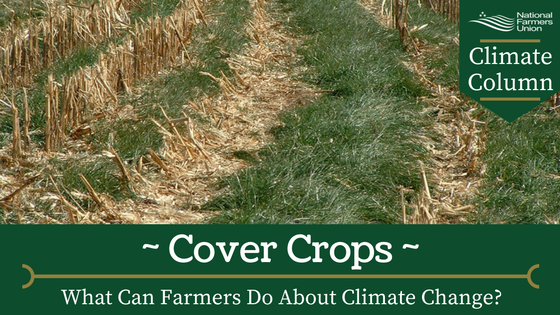 By Alexis Dunnum, NFU Intern
By Alexis Dunnum, NFU Intern
In the previous Climate Leaders post, we discussed the soil health benefits of no-till farming, and we will soon discuss strip-till, and mulch till. Although these practices vary slightly, something they all have in common is their use of crop residue, which comes from using cover crops.
According to the U.S. Department of Agriculture (USDA) Natural Resources Conservation Service (NRCS), cover crops are used to control erosion, add fertility and organic material to the soil, improve soil tilth, increase infiltration and aeration of the soil, and improve overall soil health.
In addition to improving the health and fertility of soils, cover crops have beneficial effects on water quantity and quality because they have a filtering effect on the movement of sediment, pathogens, and dissolved and sediment-attached pollutants. This practice is also beneficial for animals because it provides supplemental forage for grazing livestock, as well as helps to increase populations of bees. This operation requires some maintenance of the cover crops including controlling weeds by mowing or using other pest management techniques. It is also important to terminate the cover crop before excessive transpiration occurs to avoid losing water within the soil.
Cover crops can vary depending on the state of the soil. Learn which cover crop would benefit your operation by reading the NRCS Cover Crop Planting Specification Guide.
Are you a farmer that uses one or multiple cover crops? Which crop(s) do you use and how has it affected your crop yields and soil health? Share your experience in the comment section!
Like what you’ve read? Check out our Climate Leaders home page, join the conversation in the NFU Climate Leaders Facebook Group, and keep up-to-date with NFU climate action by signing up for the mailing list.